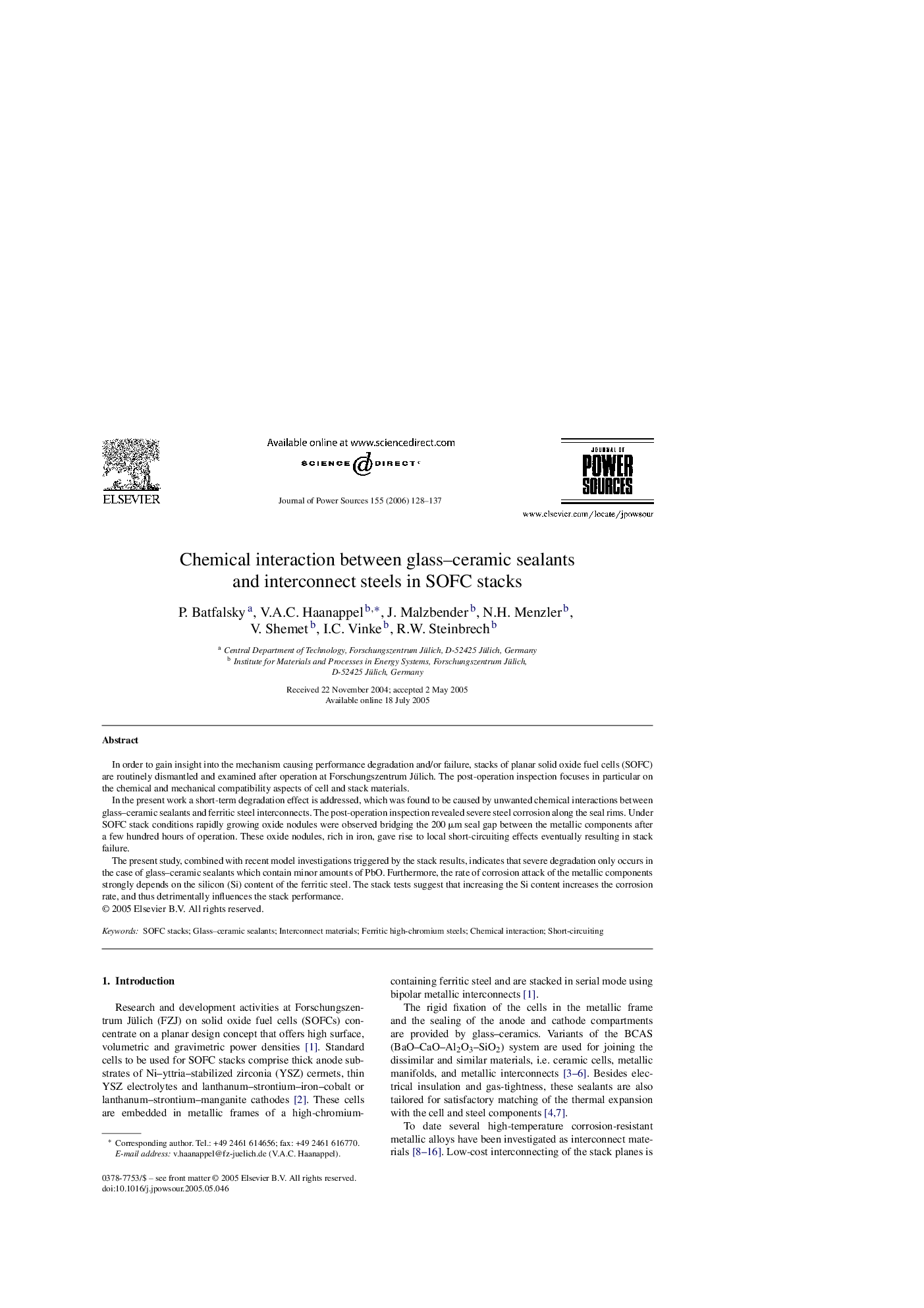| Article ID | Journal | Published Year | Pages | File Type |
|---|---|---|---|---|
| 1287884 | Journal of Power Sources | 2006 | 10 Pages |
In order to gain insight into the mechanism causing performance degradation and/or failure, stacks of planar solid oxide fuel cells (SOFC) are routinely dismantled and examined after operation at Forschungszentrum Jülich. The post-operation inspection focuses in particular on the chemical and mechanical compatibility aspects of cell and stack materials.In the present work a short-term degradation effect is addressed, which was found to be caused by unwanted chemical interactions between glass–ceramic sealants and ferritic steel interconnects. The post-operation inspection revealed severe steel corrosion along the seal rims. Under SOFC stack conditions rapidly growing oxide nodules were observed bridging the 200 μm seal gap between the metallic components after a few hundred hours of operation. These oxide nodules, rich in iron, gave rise to local short-circuiting effects eventually resulting in stack failure.The present study, combined with recent model investigations triggered by the stack results, indicates that severe degradation only occurs in the case of glass–ceramic sealants which contain minor amounts of PbO. Furthermore, the rate of corrosion attack of the metallic components strongly depends on the silicon (Si) content of the ferritic steel. The stack tests suggest that increasing the Si content increases the corrosion rate, and thus detrimentally influences the stack performance.
